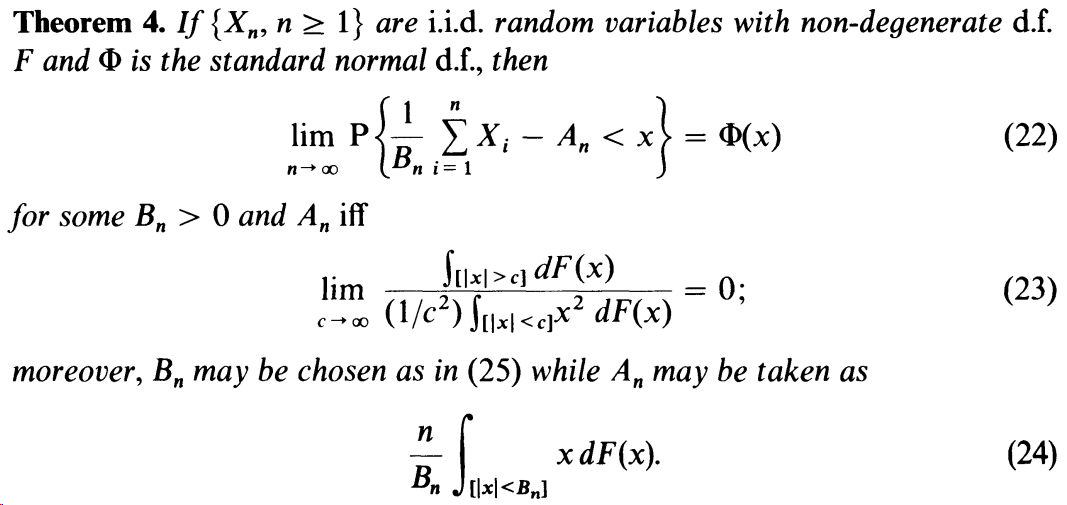Answered step by step
Verified Expert Solution
Question
1 Approved Answer
8. (i) For what positive values of , if any, does a C.L.T. hold for i.i.d. symmetric random variables with F(x): = 1 1/(2x),



8. (i) For what positive values of , if any, does a C.L.T. hold for i.i.d. symmetric random variables with F(x): = 1 1/(2x), x 1, F(x) = , 0 x 1. - (ii) Does a C.L.T. hold for independent {X} with P{X = 1} = , P{X = n} 1/(2n), P{X = 0} = (1/2) (1/n)? = Hint: For part (i). You apply thm 4, and show in what condition of the fraction such that CLT holds. (So you got alpha > 2 part.) Then you consider when alpha = 2, and you will find whether CLT holds or not. For part (ii). You want to apply thm 1, and check whether Lindeberg condition holds or not. Then it is straightforward to see whether CLT holds Theorem 4. If {Xn, n 1} are i.i.d. random variables with non-degenerate d.f. F and is the standard normal d.f., then n lim P n 'n i=1 for some B > 0 and An iff lim C - An < x} = D(x) Sux > cj dF(x) (1/2)xx2 dF(x) = 0%; moreover, B, may be chosen as in (25) while A, may be taken as n n Br S xdF(x). [|x| Theorem 1 (Lindeberg). If {X, n 1} are independent random variables with zero means, variances {o}, and distribution functions {F} satisfying (2), then the distribution functions of the normalized sums S/s, tend to the standard normal. Conversely (Feller), convergence of these distribution functions to the standard normal and imply (2). - 0, Sn "S (4)
Step by Step Solution
There are 3 Steps involved in it
Step: 1

Get Instant Access to Expert-Tailored Solutions
See step-by-step solutions with expert insights and AI powered tools for academic success
Step: 2

Step: 3

Ace Your Homework with AI
Get the answers you need in no time with our AI-driven, step-by-step assistance
Get Started


